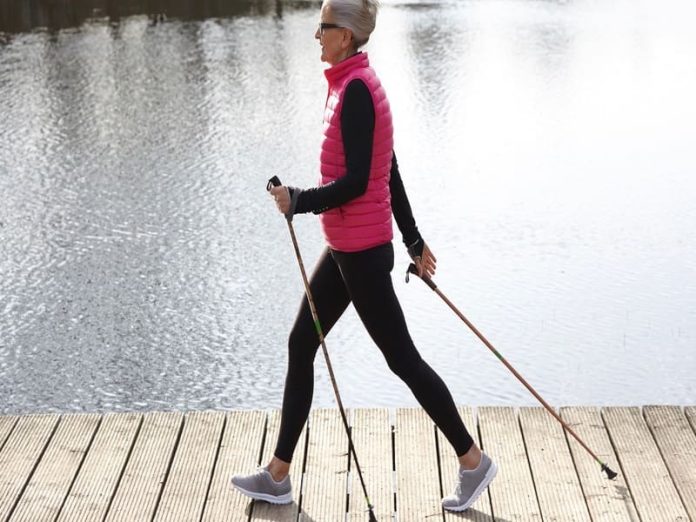A not uncommon problem of the menopause is weight gain and worsening of both glucose and lipid levels (bad cholesterol vs. good cholesterol). These factors increase the risk of cardiovascular disease and type 2 diabetes. A new study has found two effective—and pleasant—methods to promote menopausal health: Pilates and Nordic Walking.
The study authors explain that the cardiovascular and metabolic effects of physical exercise depend on their intensity, duration, and type. The goal of the study was to compare the benefits of two exercise models, Nordic Walking and Pilates, for postmenopausal women. The study group comprised 196 overweight or obese women. A control group of 20 women were advised to maintain their previous level of physical activity; the other women either began a Nordic Exercise program (88 women) or a Pilates exercise program (88 women). Blood was drawn twice during the study period for analysis: before the onset of the program and after it concluded.
The researchers found that, of the 196 women who enrolled in the study, 147 (75%) completed it. Among those women, 69 (47%) completed a 10-week Nordic Walking exercise program, 58 (39%) completed a 10 week Pilates exercise program, and 20 (14%) went about their usual activities (control group). After 10 weeks, women in the Nordic Walking group had a significant reduction in body weight (6.4%), body mass index (BMI; 6.4%), blood glucose (3.8%), total cholesterol (10.4%), non-high-density lipoprotein (HDL) cholesterol (16.7%), low-density lipoprotein cholesterol (12.8%), and triglycerides (10.6%), as well as an increase in HDL cholesterol (9.6%). A significantly smaller––but still favorable––changes, except for glucose and HDL cholesterol levels, were found in the Pilates group: decreases of 1.7% for body weight, 1.7% for BMI, 1.6% for blood glucose, 5.3% for total cholesterol, 8.3% for non-high density lipoprotein cholesterol, 7.5% for triglycerides, as well as a 6% in HDL cholesterol levels.
At the conclusion of the study, despite the differences in values for each exercise technique, the percentage of women with target concentrations of their lipid levels had significantly increased in both exercise groups. No significant changes in the aforementioned levels were found in the control group. The authors concluded that exercise training in accordance with the Nordic Walking model caused statistically and clinically more significant changes in blood glucose and basic blood lipid levels than either Pilates or dietary intervention alone.
Pilates is a form of strength and flexibility training that can be done by a woman at any level of fitness. The exercises can also be adapted individuals who have limited movement or who use wheel chairs. It is an engaging exercise program that people want to participate in. Pilates promotes a feeling of physical and mental well-being and also develops inner physical awareness. Pilates is also helpful in preventing and rehabilitating from injuries, improving posture, and increasing flexibility, circulation, and balance. Pregnant women who do these exercises can develop body alignment, improve concentration, and develop body shape and tone after pregnancy. According to the founder of the exercise program, Joseph Pilates, “You will feel better in 10 sessions, look better in 20 sessions and have a completely new body in 30 sessions.”
Nordic Walking is fitness walking using specially designed Nordic Walking poles; it offers a very efficient aerobic workout and easy way to improve one’s physical condition irrespective of age, sex, or physical condition. Compared to regular walking, Nordic walking involves applying force to the poles with each stride. Nordic walkers use more of their entire body (with greater intensity) and receive fitness-building stimulation not present in normal walking for the chest, latissimus dorsi muscle, triceps, biceps, shoulder, abdominals, spinal and other core muscles. The exercise program may result in significant increases in heart rate at a given pace. Nordic walking has been estimated as producing up to a 46% increase in energy consumption, compared to walking without poles.















